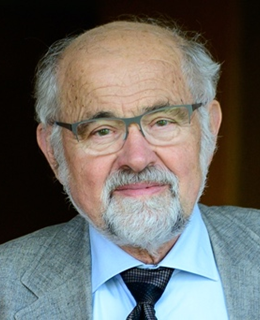
1991 Nobel Laureate in Physiology or Medicine
Director Emeritus, Membrane Biophysics Department, Max-Planck-Institute for Multidisciplinary Sciences, Göttingen, Germany
Education and training
Physics Undergraduate program, Institute of Technology, Munich, 1963-1965
M.Sc. (Physics), University of Wisconsin, 1966-1967
Ph.D. (Physics), Institute of Technology, Munich, 1967-1970
Positions
1966-1967 Graduate student and research assistant in the laboratory of Dr. W.W Beeman, University of Wisconsin, Madison
1967-1972 Graduate student and post-doc, Max-Planck-Institute für Phychiatry, Munich
1972-1982 Research Associate, Max-Planck-Institute, Göttingen
1975-1976 Research Associate with Dr. Ch. F. Stevens, Yale University, New Haven
1988-1989 Fairchild Scholar, California Institute of Technology
1983-2011 Director, Membrane Biophysics Deptm., Max-Planck-Institute, Göttingen
2011-present Emeritus Director, Max-Planck-Institute, Göttingen
2019-present Distinguished Guest Professor, Macau University of Science and Technology, Macau
2019-present Director, Shenzhen Neher Neural Plasticity Laboratory, Shenzhen Institute of Advanced Technology, Shenzhen
Achievements, Memberships
● Professor Erwin Neher was awarded the Nobel Prize in Physiology or Medicine together with Bert Sakmann in 1991 " for their discoveries concerning the function of single ion channels in cells.”
● He was elected as a member of several academies, including:
● The Royal Society, London as Foreign Member (1994)
● The National Academy of Sciences, USA, as Foreign Associate Member 1989
●The ‘Deutsche Akademie der Naturforscher, Leopoldina‘, 1998
Synaptic Plasticity Across Time Scales
E. Neher, H. Taschenberger, Kun-Han Lin
Max-Planck –Institute for Multidisciplinary Sciences, Göttingen, Germany
Shenzhen Institute of Advanced Technology, Shenzhen, China
Chemical synapses – the fundamental units for neural information processing – change their strength during repetitive use in a synapse type-specific and activity-dependent manner. Such modifications can occur on several time scales and are held to underly memory formation and adaptive learning. After the discovery of ‘Long-Term Potentiation (LTP)’ at glutamatergic synapses a vehement debate arose whether changes in synaptic strength during LTP induction reflect changes in neurotransmitter release or else in the sensitivity of the postsynaptic membrane. By now it is clear that both types of effects may occur, that it involves many different mechanisms and that there is extensive interaction between long- and short-term forms of plasticity. We analyzed a large set of data from the Calyx of Held, a glutamatergic nerve terminal, which is particularly suitable for electrophysiological analysis. We found that synaptic vesicles, before being ready for release, undergo a dynamic and reversible process of molecular priming. Synaptic plasticity, both short- and long-term, not only reflects changes in the probability of release of fully primed vesicles, but also in the state of priming, which in turn depends on past activity and second messengers. This opens up the whole range of second messenger-dependent signaling for activity-dependent modulation of neurotransmitter release.